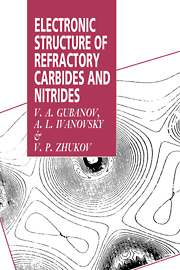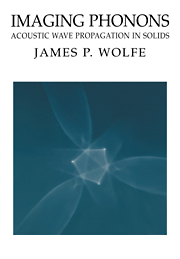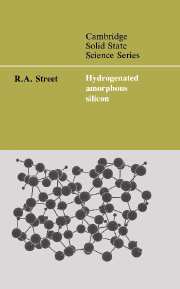Refine search
Actions for selected content:
106094 results in Materials Science
Classified
-
- Journal:
- MRS Bulletin / Volume 35 / Issue 4 / April 2010
- Published online by Cambridge University Press:
- 31 January 2011, pp. 334-336
- Print publication:
- April 2010
-
- Article
-
- You have access
- Export citation
Frontmatter
-
- Book:
- Molecular Forces and Self Assembly
- Published online:
- 06 January 2011
- Print publication:
- 01 April 2010, pp i-iv
-
- Chapter
- Export citation
Ulrich M. Gösele
-
- Journal:
- MRS Bulletin / Volume 35 / Issue 4 / April 2010
- Published online by Cambridge University Press:
- 31 January 2011, p. 266
- Print publication:
- April 2010
-
- Article
-
- You have access
- Export citation
Strain gradients and the strength of nanoporous gold
-
- Journal:
- Journal of Materials Research / Volume 25 / Issue 4 / April 2010
- Published online by Cambridge University Press:
- 31 January 2011, pp. 746-753
- Print publication:
- April 2010
-
- Article
- Export citation

Electronic Structure of Refractory Carbides and Nitrides
-
- Published online:
- 30 March 2010
- Print publication:
- 03 February 1994

Imaging Phonons
- Acoustic Wave Propagation in Solids
-
- Published online:
- 24 March 2010
- Print publication:
- 13 July 1998

Hydrogenated Amorphous Silicon
-
- Published online:
- 13 March 2010
- Print publication:
- 30 August 1991
Crystal structure and optical properties of erbium- and neodymium-doped zirconia nanoparticles
-
- Journal:
- Journal of Materials Research / Volume 25 / Issue 3 / March 2010
- Published online by Cambridge University Press:
- 31 January 2011, pp. 500-509
- Print publication:
- March 2010
-
- Article
- Export citation
Business Lessens
-
- Journal:
- MRS Bulletin / Volume 35 / Issue 3 / March 2010
- Published online by Cambridge University Press:
- 31 January 2011, p. 256
- Print publication:
- March 2010
-
- Article
-
- You have access
- Export citation
Absorption and scattering of near-infrared light by dispersed lanthanum hexaboride nanoparticles for solar control filters
-
- Journal:
- Journal of Materials Research / Volume 25 / Issue 3 / March 2010
- Published online by Cambridge University Press:
- 31 January 2011, pp. 510-521
- Print publication:
- March 2010
-
- Article
- Export citation
MRS volume 35 issue 3 Front matter
-
- Journal:
- MRS Bulletin / Volume 35 / Issue 3 / March 2010
- Published online by Cambridge University Press:
- 31 January 2011, p. f1
- Print publication:
- March 2010
-
- Article
-
- You have access
- Export citation
An evaluation of phase separated, self-assembled LaMnO3-MgO nanocomposite films directly on IBAD-MgO as buffer layers for flux pinning enhancements in YBa2Cu3O7-δ coated conductors
-
- Journal:
- Journal of Materials Research / Volume 25 / Issue 3 / March 2010
- Published online by Cambridge University Press:
- 31 January 2011, pp. 437-443
- Print publication:
- March 2010
-
- Article
- Export citation
Mark C. Hersam Named 2010 MRS Outstanding Young Investigator for Nanoelectronic Materials
-
- Journal:
- MRS Bulletin / Volume 35 / Issue 3 / March 2010
- Published online by Cambridge University Press:
- 31 January 2011, pp. 232-233
- Print publication:
- March 2010
-
- Article
-
- You have access
- Export citation
Thermodynamic assessment of phase equilibria in the Sn-Au-Bi system with key experimental verification
-
- Journal:
- Journal of Materials Research / Volume 25 / Issue 3 / March 2010
- Published online by Cambridge University Press:
- 31 January 2011, pp. 576-586
- Print publication:
- March 2010
-
- Article
- Export citation
Biorenewable Multiphase Polymers
-
- Journal:
- MRS Bulletin / Volume 35 / Issue 3 / March 2010
- Published online by Cambridge University Press:
- 31 January 2011, pp. 194-200
- Print publication:
- March 2010
-
- Article
- Export citation
Technology Advances
-
- Journal:
- MRS Bulletin / Volume 35 / Issue 3 / March 2010
- Published online by Cambridge University Press:
- 31 January 2011, pp. 179-181
- Print publication:
- March 2010
-
- Article
-
- You have access
- Export citation
Revelation of the effect of structural heterogeneity on microplasticity in bulk metallic-glasses
-
- Journal:
- Journal of Materials Research / Volume 25 / Issue 3 / March 2010
- Published online by Cambridge University Press:
- 31 January 2011, pp. 563-575
- Print publication:
- March 2010
-
- Article
- Export citation
Displays from Transparent Films of Natural Nanofibers
-
- Journal:
- MRS Bulletin / Volume 35 / Issue 3 / March 2010
- Published online by Cambridge University Press:
- 31 January 2011, pp. 214-218
- Print publication:
- March 2010
-
- Article
- Export citation
Investigation of defects and nanoparticles with martensitic phase transformation in surface nanostructured 316L stainless steel by slow-positron beam
-
- Journal:
- Journal of Materials Research / Volume 25 / Issue 3 / March 2010
- Published online by Cambridge University Press:
- 31 January 2011, pp. 587-591
- Print publication:
- March 2010
-
- Article
- Export citation
Comment on “Homogeneity of Zr64.13Cu15.75Ni10.12Al10 bulk metallic glass,” by L-Y. Chen, Y-W. Zeng, Q-P. Cao, B-J. Park, Y-M. Chen, K. Hono, U. Vainio, Z-L. Zhang, U. Kaiser, X-D. Wang, and J-Z. Jiang [J. Mater. Res. 24, 3116 (2009)]
-
- Journal:
- Journal of Materials Research / Volume 25 / Issue 3 / March 2010
- Published online by Cambridge University Press:
- 31 January 2011, pp. 598-601
- Print publication:
- March 2010
-
- Article
- Export citation
